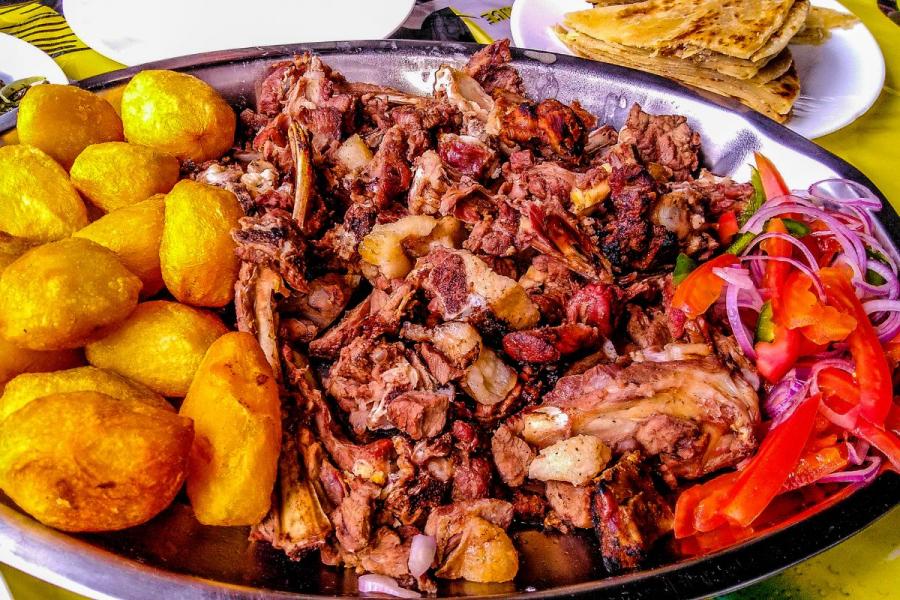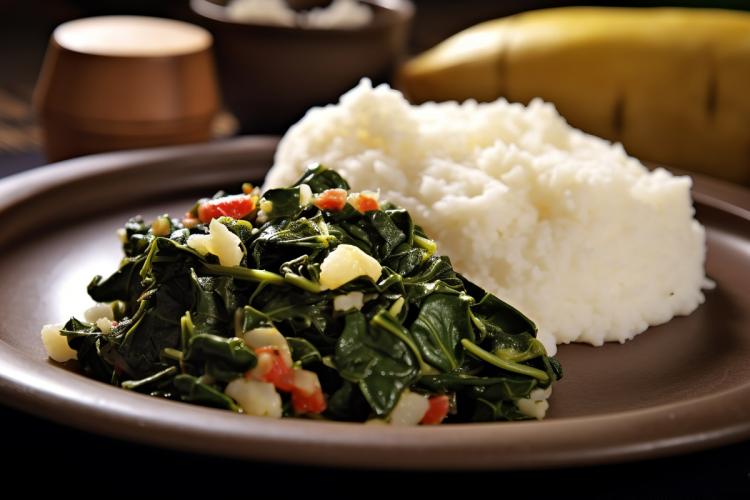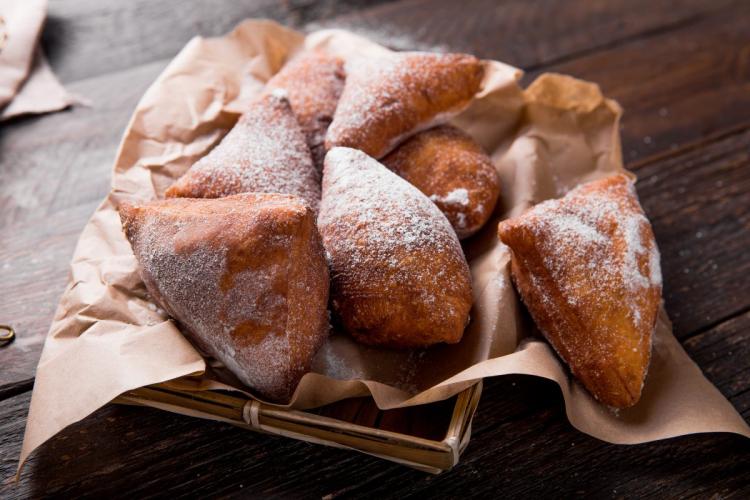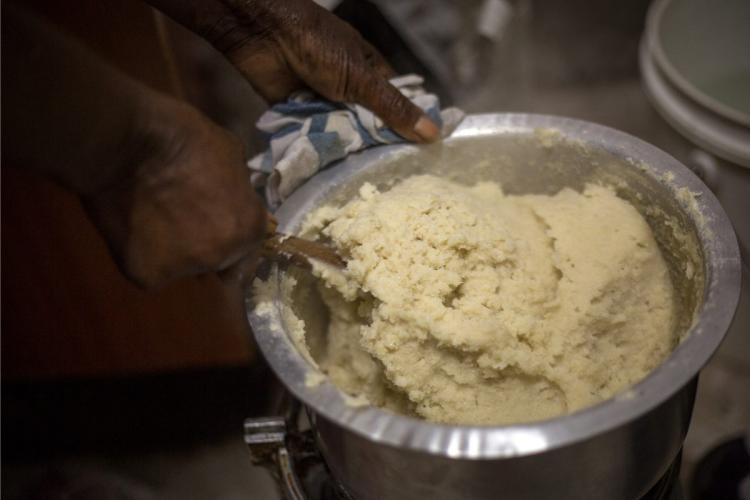Food in Kenya
A culinary journey through Kenya's rich cultural heritage.
Nestled on the eastern coast of Africa, Kenya is a land of breathtaking landscapes, diverse wildlife, and a rich tapestry of cultures. From the bustling streets of Nairobi to the serene beaches of Mombasa, and from the Great Rift Valley to the snow-capped peaks of Mount Kenya, this nation is a melting pot of traditions and influences. But beyond its scenic beauty and vibrant cultures, Kenya offers another compelling experience that often goes unnoticed, the extraordinary world of its cuisine.
Food in Kenya is more than just sustenance; it is a celebration, a form of expression, and a unifying thread that weaves through the fabric of its diverse communities. Whether it's the communal experience of sharing a plate of nyama choma (grilled meat) with friends, or the comforting simplicity of a bowl of ugali (maize porridge), food serves as a lens through which we can understand the complexities and joys of Kenyan life. It is deeply embedded in the country's rituals, festivals, and daily activities, often telling a story that words alone cannot convey.
So, as we embark on this culinary journey through Kenya, prepare to be amazed by the flavors, textures, and stories that make up this nation's unique food culture. It's a feast not just for the palate, but also for the soul, offering a deliciously insightful glimpse into what makes Kenya truly extraordinary.
Welcome to the rich and diverse world of Kenyan cuisine. Prepare to be delighted, educated, and above all, well-fed.
The historical context shows the melting pot of influences shaping Kenyan cuisine
When it comes to understanding the culinary landscape of Kenya, one must delve into the layers of history that have shaped this nation. The food culture of Kenya is not just a product of indigenous practices and local ingredients; it is also a fascinating narrative of external influences, trade, and colonization. From Indian spices to Arab trading routes and British colonial legacies, the historical context provides a rich backdrop against which Kenyan cuisine has evolved.
Indian Influence
One of the most significant influences on Kenyan cuisine comes from India. Brought over by Indian laborers who came to work on the British colonial railway projects in the late 19th and early 20th centuries, Indian cuisine has found a permanent home in Kenya. Dishes like chapati (flatbread), biryani, and various curries have been integrated into the Kenyan diet. The ubiquitous "samosa," a deep-fried pastry filled with meat or vegetables, is a staple snack that owes its origins to the Indian subcontinent.
Arab impact
Long before the British or the Indians set foot in Kenya, Arab traders were sailing along the East African coast, engaging in trade with the local communities. The coastal region of Kenya, particularly cities like Mombasa, bear the marks of this Arab influence. Spices like cardamom, cloves, and cinnamon were introduced, enriching the local cuisine. Dishes like "pilau," a spiced rice dish, and "swahili biryani" are testaments to the Arab influence on Kenyan food culture.
British colonial legacy
The period of British colonization also left its mark on Kenyan cuisine, albeit in a less spicy fashion. The British introduced farming techniques and crops like tea and coffee, which are now significant exports for Kenya. The tradition of "afternoon tea" has also remained, albeit adapted to local tastes and ingredients. Moreover, English-style baked goods like scones and cakes have found their way into Kenyan kitchens and cafes.
Indigenous foundations
While external influences have been significant, the foundation of Kenyan cuisine lies in its indigenous foods and cooking methods. Maize, millet, and sorghum have been staple grains for centuries, often prepared as a form of porridge like ugali. Meat, particularly beef, goat, and chicken, is commonly grilled or stewed, as seen in dishes like "nyama choma" and "sukuma wiki," a collard green dish often served as a side.
A symphony of flavors
The beauty of Kenyan cuisine lies in its ability to absorb various influences while retaining its core identity. It is a symphony of flavors, where each historical influence plays a note, but the overall composition is uniquely Kenyan. Whether it's the spicy kick of a Swahili curry or the comforting blandness of ugali, each dish tells a story of migration, trade, and cultural exchange.
As we continue to explore the culinary wonders of Kenya, it becomes evident that to taste Kenyan food is to take a bite out of its rich history—a history that is as complex as it is delicious.
Regional Variations show the geography of flavor in Kenya
Kenya is a country of diverse landscapes, each with its own unique set of natural resources, climate, and agricultural practices. This geographical diversity is mirrored in the country's culinary scene, where each region offers its own distinct flavors, ingredients, and cooking techniques. From the coastal towns of Mombasa to the arid landscapes of the Rift Valley, and from the fertile highlands to the bustling urban centers, the geography of Kenya plays a crucial role in shaping its food culture.
Coastal cuisine
The coastal region of Kenya, with cities like Mombasa and Malindi, is a treasure trove of seafood and spices. Influenced heavily by Arab and Indian traders, the cuisine here is rich in coconut milk, tamarind, and an array of spices like cardamom and cloves. Dishes like "Pilau" and "Swahili Biryani" are popular, often featuring fish, shrimp, or crab. Coconut rice is another staple, perfectly complementing the spicy stews and curries.
Rift Valley and inland regions
The Rift Valley and other inland regions offer a different culinary experience altogether. Here, the focus is on hearty, meat-based dishes like nyama choma (grilled meat), often served with ugali (maize porridge) and sukuma wiki (collard greens). The Rift Valley is also known for its dairy products; fermented milk or mursik is a popular beverage among the Kalenjin community. The area's cooler climate also supports the cultivation of various vegetables and tubers, adding diversity to the local diet.
Central highlands
The Central Highlands, including regions around Mount Kenya, are fertile grounds for agriculture. This area is known for its variety of fresh produce, including potatoes, cabbages, and carrots. Dishes like "Githeri" and "Irio," which are mixtures of boiled maize and beans or peas and potatoes, respectively, are common staples. The highlands are also Kenya's tea and coffee country, producing some of the world's finest brews.
Nairobi and urban centers
Nairobi, Kenya's capital and largest city, is a melting pot of cultures and cuisines. Here, you can find everything from traditional Kenyan dishes to international fare. Fast food, including Kenyan interpretations of burgers, fries, and fried chicken, is widely available. Nairobi is also where you'll find the most diverse range of restaurants, offering cuisines from Italian and Chinese to Ethiopian and Lebanese.
Northern frontier
The arid northern regions of Kenya, inhabited mainly by pastoral communities, have a diet focused on meat and milk. Camel meat and milk are particularly popular. Due to the harsh climate, fewer crops are grown, making livestock the primary source of sustenance. Dishes are often simpler but enriched with natural flavors and traditional spices.
A culinary map
As we traverse the culinary map of Kenya, it becomes evident that the food is as diverse as the landscapes from which it originates. Each region adds its own color to the vibrant mosaic that is Kenyan cuisine, influenced by the natural resources available and the historical and cultural factors that have shaped each area. Whether you're savoring seafood by the coast or enjoying a meaty feast in the Rift Valley, you're not just tasting a dish; you're experiencing a region, a culture, and a way of life.
The pillars of Kenyan cuisine
In the diverse culinary landscape of Kenya, certain foods stand out as staples, enjoyed across various communities and regions. These are the dishes that grace everyday meals and special occasions alike, serving as both sustenance and a symbol of cultural identity. Among these cornerstone foods are ugali, sukuma wiki, and nyama choma, each with its own unique place in the Kenyan culinary story.
Ugali is the quintessential Kenyan staple
Ugali is more than just a dish; it's a way of life for many Kenyans. Made from maize flour and water, this starchy, polenta-like side dish is the ultimate comfort food. It's cooked to a dense, dough-like consistency and is often served as an accompaniment to meat, fish, vegetables, or sauces. Ugali is versatile and can be enjoyed at any time of the day, from breakfast to dinner. Its simplicity makes it a blank canvas, allowing it to pair well with a variety of dishes. In essence, a Kenyan meal is often considered incomplete without a serving of ugali.
Sukuma wiki is the green that keeps on giving
Sukuma Wiki literally translates to "push the week," and true to its name, this dish is a reliable and nutritious option that many Kenyan families rely on to "push through the week." Made from collard greens sautéed with onions, tomatoes, and spices, Sukuma Wiki is a quick and easy dish to prepare. It's rich in vitamins and minerals and serves as an affordable source of nutrition. Like ugali, sukuma wiki is versatile and can be served with a variety of main courses, making it a ubiquitous presence on Kenyan dinner tables.
Nyama choma proves Kenya's love affair with grilled meat
If ugali is the comforting constant in Kenyan cuisine, then Nyama Choma is its celebratory counterpart. Translating to "grilled meat," Nyama Choma is often the centerpiece of social gatherings, festivals, and special occasions. Usually made from beef, goat, or sometimes chicken, the meat is seasoned with simple spices and then grilled over an open flame until it's tender and smoky. It's commonly served with ugali and perhaps a side of Sukuma Wiki or a helping of "Kachumbari," a fresh tomato and onion salad. The experience of sharing Nyama Choma with friends and family is a cherished Kenyan tradition, embodying the communal spirit that is integral to the country's culture.
The trinity of kenyan cuisine
Together, ugali, sukuma wiki, and nyama choma form the trinity of Kenyan staple foods, each representing different aspects of the nation's culinary and cultural identity. Ugali is the humble base, Sukuma Wiki the nourishing constant, and Nyama Choma the festive indulgence. These dishes are the threads that weave the rich tapestry of Kenyan cuisine, enjoyed by people from all walks of life, across all regions.
As we continue to explore the multifaceted world of Kenyan food, these staples serve as our guideposts, reminding us that sometimes the simplest ingredients create the most meaningful and memorable meals.
The stars of Kenyan culinary celebrations
In Kenya, food is not just about nourishment; it's an integral part of the country's cultural celebrations and rituals. From weddings and birthdays to religious festivals and traditional ceremonies, specific dishes take center stage, each with its own significance and story to tell. Here are some of the most popular Kenyan dishes that are not just crowd-pleasers but also deeply rooted in various cultural celebrations.
Chapati is the festive flatbread
Chapati, a flaky flatbread that originated from the Indian subcontinent, has become a beloved staple in Kenyan celebrations. Whether it's a wedding, Christmas, or a family gathering, Chapati is often prepared in large quantities, signifying abundance and communal sharing. It's commonly served with stews and curries, and making it is often a communal activity, bringing family members together in the kitchen.
Mandazi is the sweet treat
Mandazi, often referred to as the "Swahili doughnut," is a sweet, deep-fried pastry flavored with coconut, cardamom, and sometimes a hint of cinnamon. It's a popular treat during religious festivals like Eid and Christmas, as well as at family gatherings and celebrations. Light, airy, and delicious, Mandazi serves as both a dessert and a snack, symbolizing sweetness and joy in communal festivities.
Githeri is the harvest dish
Githeri is a simple yet hearty dish made from boiled maize and beans, and it holds special significance among the Kikuyu community. It's often associated with the harvest season and is considered a symbol of abundance and gratitude. During traditional ceremonies and gatherings, Githeri is prepared as a communal dish, celebrating the bounty of the land.
Pilau is the dish of special occasions
Pilau is a spiced rice dish often featuring meat, potatoes, and a blend of aromatic spices like cumin, cardamom, and cloves. It's especially popular in the coastal regions but has found its way into celebrations all over Kenya. Pilau is often reserved for special occasions like weddings, religious festivals, and significant family events, symbolizing prosperity and unity.
Ugali and nyama choma are a dynamic duo
As mentioned earlier, ugali and nyama choma are staples in Kenyan cuisine, but they take on special significance during celebrations. Nyama choma is often the star of the show at gatherings, symbolizing communal bonds and shared joy. When paired with ugali, it forms a quintessential Kenyan celebratory meal, enjoyed amid laughter, music, and dance.
Mukimo is a highland favorite
Mukimo is a dish from the Central Highlands, made by mashing together potatoes, green vegetables, and sometimes maize or beans. It's a staple during celebrations among the Kikuyu, Embu, and Meru communities, often served alongside meat dishes. Mukimo is considered a dish of sustenance and is especially popular during traditional ceremonies.
The cultural significance
Each of these popular dishes carries its own weight of cultural significance, often tied to specific communities, regions, or types of celebrations. They are more than just food; they are expressions of Kenyan diversity, history, and communal values. As you partake in these dishes, you're not just enjoying a meal; you're participating in a rich cultural tapestry that is as flavorful as it is meaningful.
Sipping through Kenya's liquid culture
In Kenya, the act of sharing a drink—whether it's a cup of chai, a bottle of Tusker, or a glass of Dawa—is more than just quenching thirst; it's a social ritual, a moment of relaxation, and a celebration of life's simple pleasures. Each popular drink in Kenya has its own unique story and cultural significance, making them an integral part of the country's culinary tapestry.
Chai is their soul-warming elixir
Chai is not just a drink in Kenya; it's a tradition. This spiced tea, infused with a blend of spices like cardamom, cinnamon, and ginger, is a staple in Kenyan households. It's commonly enjoyed in the morning as a kickstart to the day and in the afternoon as a pick-me-up, often accompanied by snacks like Mandazi or Chapati. Chai is also a symbol of hospitality; offering a cup to guests is considered a sign of warmth and welcome. During social gatherings, religious ceremonies, or even business meetings, chai serves as the comforting constant, bringing people together over shared sips.
The taste of Kenyan pride
If there's one drink that captures the spirit of Kenya's social life, it's Tusker Beer. Named after the elephant that killed George Hurst, one of the brewery's founders, Tusker has been a part of Kenya's history since 1922. This local beer brand is a popular choice at social gatherings, parties, and celebrations like weddings and festivals. Whether you're watching a football match, enjoying Nyama Choma with friends, or simply unwinding after a long day, a bottle of Tusker is often the go-to choice. Its crisp, refreshing taste and local roots make it a source of national pride, enjoyed by Kenyans from all walks of life.
Dawa is Kenya's signature cocktail
Dawa, which means "medicine" in Swahili, is a cocktail that's as delightful as it is unique. Made from vodka, honey, and lime, this drink is often served over crushed ice and stirred with a Dawa stick, a wooden muddler used to mix the ingredients. Originating from the coastal regions but now popular nationwide, Dawa is considered the ultimate Kenyan cocktail. It's especially popular in restaurants and bars, often enjoyed as a pre-dinner aperitif or as a refreshing drink on a hot day. While it may not have the medicinal properties its name suggests, many Kenyans swear by its ability to lift spirits and enliven social gatherings.
A toast to Kenyan culture
Whether it's the comforting warmth of chai, the social camaraderie around a bottle of Tusker, or the exotic allure of a Dawa cocktail, each of these popular drinks contributes to the rich and diverse liquid culture of Kenya. They are more than just beverages; they are experiences, each offering a unique lens through which to understand and appreciate the social and cultural nuances of this vibrant country.
So, the next time you find yourself in Kenya, make sure to raise a glass—or a cup—and toast to the incredible diversity and richness that define this nation's culinary landscape. Cheers!
Street food culture brings a taste of Kenya on every corner
If you want to experience the pulse of Kenyan cuisine, look no further than its bustling street food scene. From the busy avenues of Nairobi to the laid-back lanes of coastal towns, the streets are where culinary magic happens. It's a world of sizzling grills, aromatic spices, and the chatter of vendors and customers, all coming together in a vibrant symphony of flavors and experiences. Whether you're a local in a hurry or a traveler keen to taste the real Kenya, the street food culture offers something for everyone.
Samosas are a pocket-sized delight
Samosas are perhaps one of the most iconic street food items in Kenya. These deep-fried triangular pastries are filled with a variety of ingredients, ranging from spiced meat and vegetables to lentils and even fish. Originating from the Indian subcontinent, Samosas have been fully embraced by Kenyans and are a popular snack throughout the day. They're often enjoyed with a side of chutney or just as they are, hot and crispy straight from the fryer.
Mandazi is an anytime snack
As mentioned earlier, Mandazi is a sweet treat that's not just reserved for special occasions. On the streets, these coconut-flavored doughnuts are a common sight, often enjoyed with a cup of chai (tea) for breakfast or as an afternoon snack. The simplicity and portability of Mandazi make it a perfect street food item, allowing you to enjoy a taste of Kenyan sweetness on the go.
Bhajia sows the coastal influence
Bhajia, or fried potato slices, are another street food favorite, especially in the coastal regions. Sliced potatoes are dipped in a spiced gram flour batter and deep-fried until crispy. They're usually served hot, sprinkled with spices and accompanied by a side of tamarind or coconut chutney. Bhajia is a testament to the Indian and Arab influences on Kenyan cuisine, offering a spicy, tangy treat that's hard to resist.
Roasted maize and boiled eggs are the quick bites
For those looking for something quick and satisfying, roasted maize and boiled eggs are widely available. Vendors with makeshift grills offer maize cobs roasted over charcoal, seasoned with lime and chili. Boiled eggs, often cut in half and seasoned with spices, offer another quick protein fix. These are the go-to snacks for people on the move, providing a quick, affordable, and delicious solution to hunger pangs.
Mutura is Kenya's sausage delight
Mutura, often referred to as the Kenyan sausage, is a must-try for the adventurous eater. Made from a mixture of meat and spices, and sometimes blood, the ingredients are stuffed into an intestine casing and grilled. It's a delicacy often enjoyed in the evenings, drawing crowds to street corners and market stalls. Mutura offers a unique taste experience, combining the smokiness of the grill with the richness of its filling.
The social aspect
Street food in Kenya is not just about the food; it's also a social experience. It's where people gather after work, where friends catch up, and where communities come together. The vendors themselves are often local legends, known for their special recipes and quick service.
In essence, the street food culture of Kenya is a mirror reflecting its diverse culinary influences, its people's ingenuity, and the sense of community that defines this nation. So the next time you find yourself on a Kenyan street, follow the aroma and the crowds; they'll lead you to a culinary adventure you won't soon forget.
Modern twists mark the evolution of Kenyan cuisine in the 21st century
As Kenya strides into the 21st century, its food culture is undergoing a fascinating transformation. While the traditional staples and popular dishes continue to hold their ground, a wave of contemporary influences and fusion cuisine is adding new dimensions to the Kenyan culinary landscape. From upscale restaurants in Nairobi to food trucks and pop-up markets, modern twists on classic dishes are capturing the imagination of a new generation of food lovers.
Global influences
The increasing globalization and cosmopolitan nature of cities like Nairobi have brought a plethora of international cuisines to Kenya. Sushi bars, Italian pizzerias, and even Mexican taquerias are becoming more common. This global influence is not just limited to standalone international restaurants; it's seeping into traditional Kenyan dishes, creating exciting fusion options. For instance, you might find Ugali served with a side of guacamole or Chapati being used as a base for a local version of pizza.
The rise of health-conscious cuisine
As health and wellness trends gain traction globally, Kenya is no exception. There's a growing demand for organic, vegetarian, and vegan options, and local chefs are rising to the challenge. Dishes like Sukuma Wiki and Githeri are being reinvented with quinoa or other whole grains, and traditional meat dishes are getting plant-based makeovers. The use of indigenous superfoods like moringa and baobab in smoothies and salads is also gaining popularity.
The food truck phenomenon
Inspired by the food truck cultures of cities like Los Angeles and New York, Nairobi and other Kenyan cities are experiencing their own food truck boom. These mobile eateries offer everything from gourmet burgers and artisanal coffee to Kenyan-Asian fusion dishes. It's street food, but with a trendy, modern twist.
Social media and food blogging
The rise of social media and food blogging has had a significant impact on modern Kenyan cuisine. Chefs and home cooks alike are taking to Instagram, YouTube, and various blogs to showcase their culinary creations. This digital exposure is not only popularizing new trends but also reviving interest in traditional dishes, often presented with a modern twist.
Culinary tourism
Kenya is increasingly being recognized as a destination for culinary tourism. Cooking classes, food tours, and gastronomic events like Nairobi Restaurant Week are drawing both locals and tourists into the evolving food scene. These platforms serve as incubators for new ideas and fusion dishes, combining traditional Kenyan flavors with global culinary techniques.
The future is fusion
As Kenya continues to modernize and globalize, its food culture is set to become an exciting melting pot of flavors, techniques, and influences. The essence of traditional Kenyan cuisine remains strong, but the modern twists and fusion creations are adding layers of complexity and excitement. It's a culinary evolution that pays homage to the past while eagerly embracing the future, making this an incredibly exciting time to be a food lover in Kenya.




